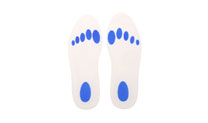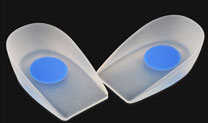In recent years, one of the new fashions in the running world is the rise of various types of compression equipment. Whether it's a sprinter's compression trousers or a marathon runner's
compression socks, runners wearing compression gear can be seen in almost all races.
Along with this boom in compression apparel, manufacturers are also trying to promote the effectiveness of their products to improve athletic performance. There are already some formal scientific studies that discuss the role of compression equipment.
The original role of compression garments is in the medical field to aid in the treatment of diseases such as lymphedema with "swelling" symptoms; for example, limbs with lymphedema, the lymphatics do not work properly and protrude from the surface of the skin. Soon, compression apparel has found its use in the treatment of other diseases: doctors have found that gradient compression socks (the pressure in the ankle area is the largest, and the pressure on the knee is decreasing) can help the varicose veins and other diseases, and prevent Patients who are in bed after surgery develop thrombosis.Compression socks can function by providing positive pressure to a unidirectionally flowing vascular valve. The difference in pressure between the ankle and the knee can promote the return of blood to the heart, and at the same time, complete with the influence of gravity on the blood flow to some extent; for those with inconvenient activities, the latter may cause local blood flow to be poor (for example, long-distance travelers who travel frequently on airplanes are advised to wear compression stockings during flight to prevent thrombosis in deep blood vessels. What is certain is that compression equipment will not have a decisive impact on performance, although it may slightly improve performance. Its best function is to prevent soreness and muscle damage after high-intensity exercise.
Have you tried compressing socks? Compared with ordinary sports socks, do you think it has magical features?



